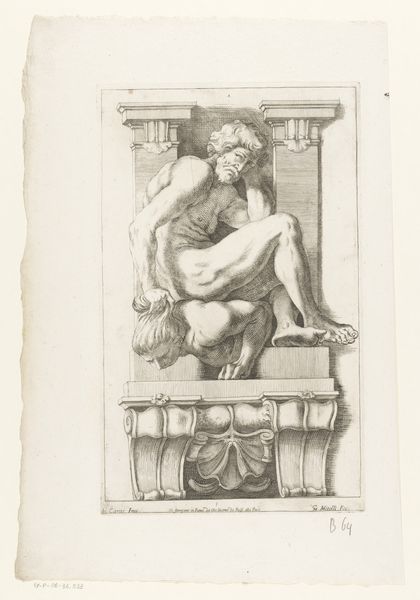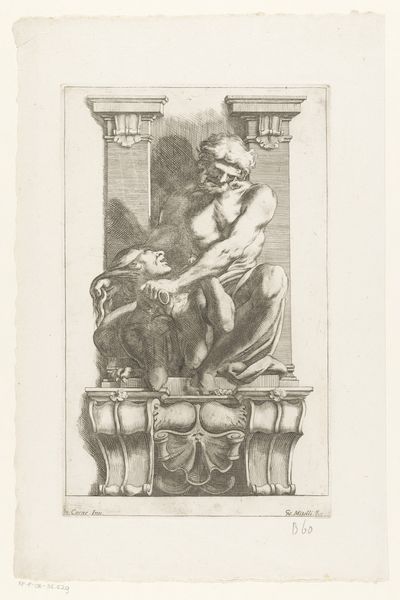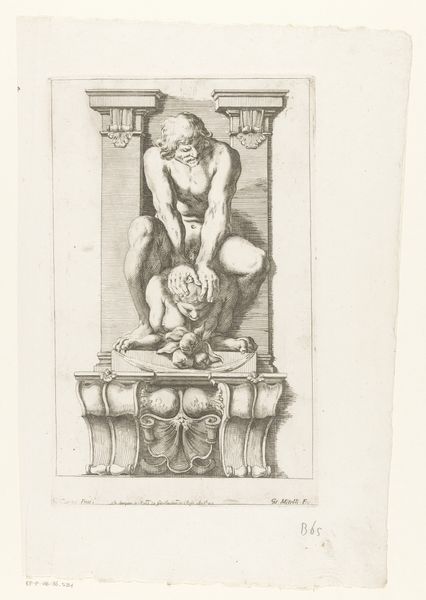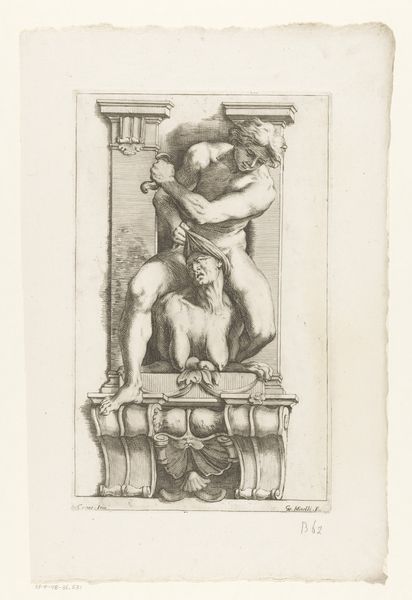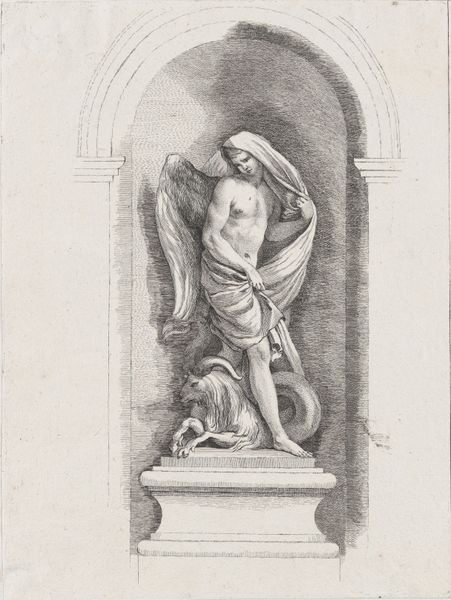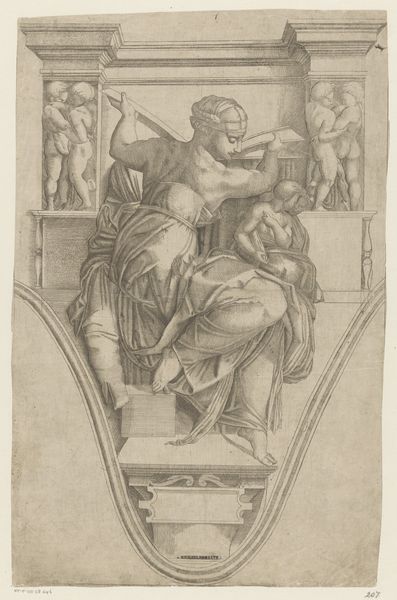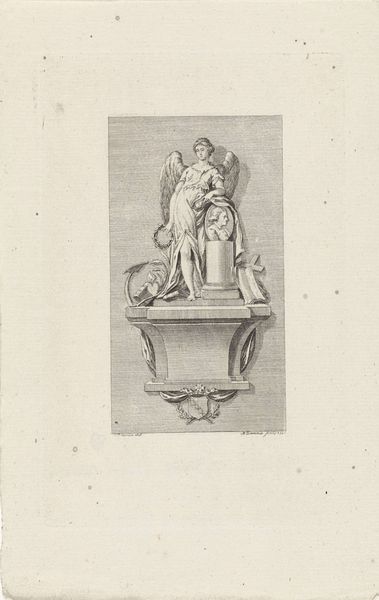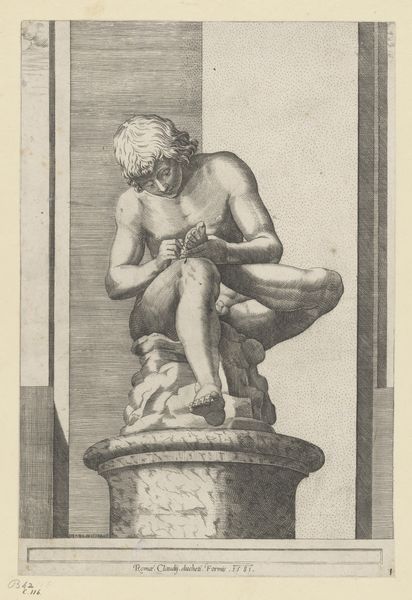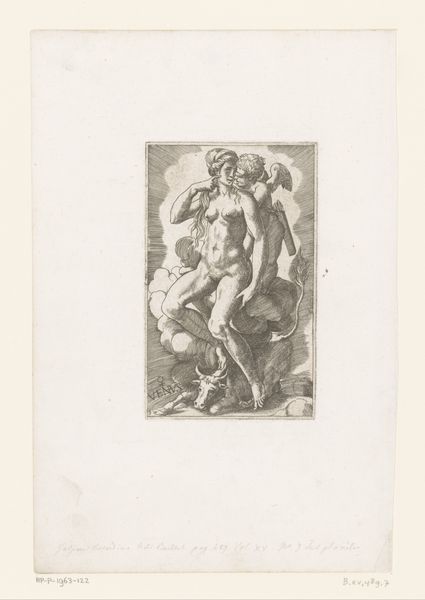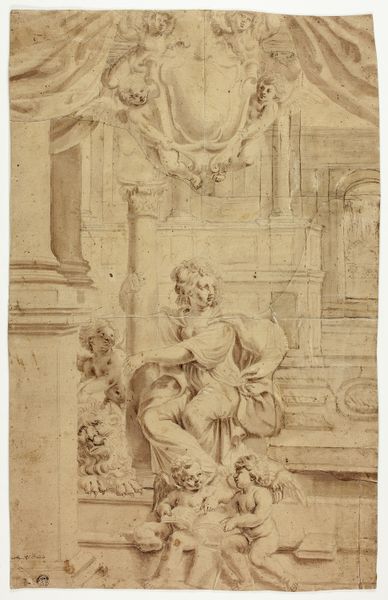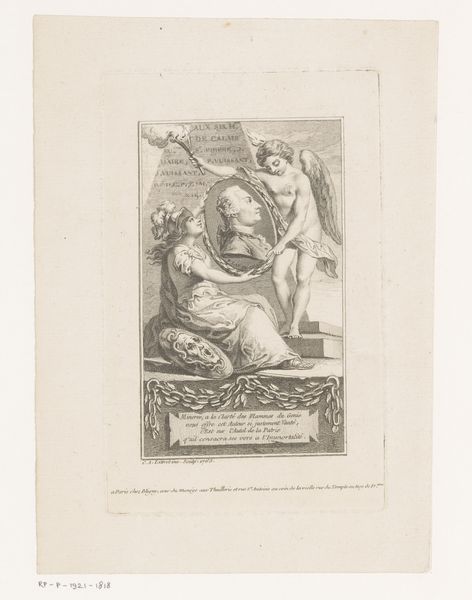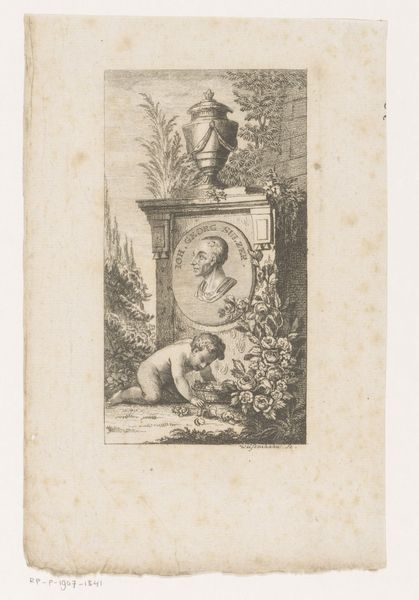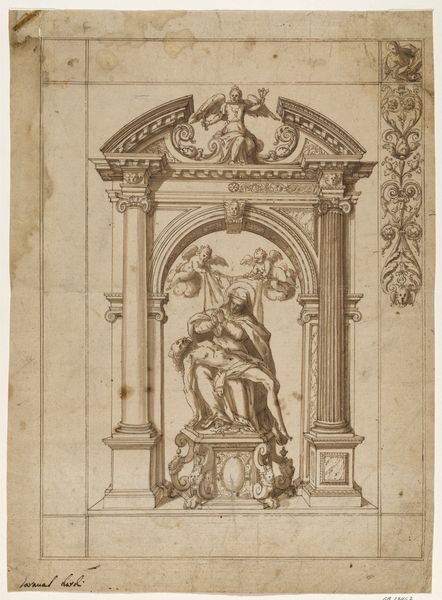
engraving
#
baroque
#
classical-realism
#
figuration
#
history-painting
#
engraving
Dimensions: height 334 mm, width 206 mm
Copyright: Rijks Museum: Open Domain
Curator: This is Giuseppe Maria Mitelli's "Man subjugates a harpy," an engraving created in 1663, now residing here at the Rijksmuseum. What's your immediate impression? Editor: The scene feels brutally physical. There's a sense of dominance, a man seemingly pinning down a screaming harpy. The lines are harsh, emphasizing struggle. Is this meant to glorify male strength? Curator: It’s interesting you pick up on that. Mitelli, who was known for popular printmaking, clearly engages with established iconographies here. We should consider the engraving as a reproduction—its existence tied to material and process. Its accessibility allowed this particular representation to circulate widely within the visual culture of the time. Editor: And that's where my discomfort deepens. Circulating this kind of imagery normalizes power dynamics rooted in violence and a sort of victory over the "monstrous feminine." Consider how the harpy, historically a symbol of female rage and vengeance, is being forcibly silenced. This work is fraught. Curator: That's a valid interpretation. Looking at the materials and production though, the engraver's skill is remarkable in rendering the texture of skin, the detail on the architectural structure—elements which signal value through refined, demanding hand work. It raises questions about labor itself, both Mitelli's artistic work and how these mythologies were being consumed. Editor: I still think it's crucial to challenge the glorification, even unintentionally, of subjugation, especially within a baroque and classical framework that tends towards ideals of beauty built on unequal social foundations. Does classical realism allow us to ignore its problematic messaging? Curator: I understand. By examining the engraving as an object with a clear method of creation, we expose the choices involved in the production of this art and this type of story being circulated, which can spark broader considerations of societal structures. Editor: Precisely. Recognizing it is a product of specific ideological investments opens the door to actively critique, not passively accept, its messages. Curator: Indeed. This highlights how important it is to remember the physical object itself, a distributed work that exists because it was carefully crafted and made for consumption and wide circulation. Editor: Exactly. Art doesn't exist in a vacuum and thinking through both artistic intent and material context offers space to dismantle those structures that work against equality.
Comments
No comments
Be the first to comment and join the conversation on the ultimate creative platform.
